Why is the cloud so cost-effective?
Did you know that global spending on cloud infrastructure reached $178 billion in 2021? More and more organizations, enterprises, and small and mid-sized businesses are trusting their data storage to cloud computing.
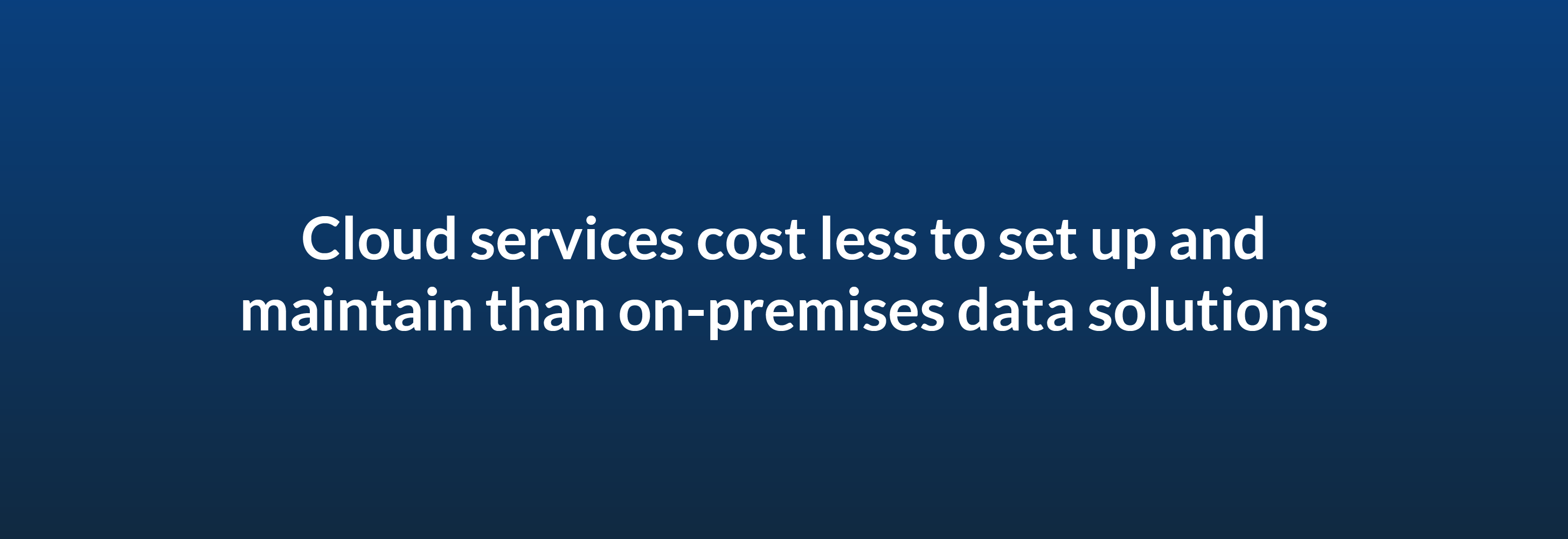
The cloud offers access to various technologies and lowers the technical expertise needed to manage an organization's data. Cloud services also cost less to set up and maintain than on-premises data servers, cutting down on the expense of data storage while providing excellent data storage capabilities and other computing features.
The reason the cloud is so cost-effective is that it eliminates the need for data storage hardware and reduces your IT staff's responsibilities. If you're looking to implement cloud services in your company, consider a few ways your organization could benefit from cloud computing cost savings.
Reduced hardware costs
On-premises data storage requires large servers to host data. Components for these machines may cost thousands of dollars and demand supporting equipment like memory, processors, and fans. And that's not including the space to house everything. Depending on an organization's data storage needs, servers and their supporting hardware could take up a trailer or an entire building.
Smaller companies or those with rapidly growing data storage needs may find on-premises servers inconvenient and impractical. Many companies switch to web-based cloud solutions to eliminate on-premises hardware and associated costs.
Lessened need for data servers
Because cloud solutions are web-based, there's little or no need for on-premises data storage hardware. Instead, the cloud services provider stores data on its servers and handles the related overhead costs, including rent, electricity, and switches. Your cloud-services subscription typically bundles these costs into one, so you can more easily budget for cloud storage than you could with on-premises data servers.
The expense of cloud storage is typically far cheaper for organizations than purchasing and managing their data servers would be. Your teams probably already have all the hardware they need to access the cloud, like laptops, desktop computers, and smartphones.
Minimized costs for updates
Computing technology is changing rapidly, and businesses require frequent software updates to keep up with data security and new features. Growing enterprises may update their hardware more often as their data-storage needs grow. The cost of replacing data-server components and other hardware adds up.
Cloud service providers continuously refresh their solutions without requiring customers to do any IT work or purchase any updates or hardware, so your system remains seamlessly updated without any extra expense.
Effortless scaling

Cloud service resources are easy to scale, meaning your company can update cloud storage as your needs change. Cloud storage providers typically offer multiple data storage and payment plans that you can adjust as needed.
Sometimes, your organization can gain a discount by using more data. Or, you can cut back on your cloud storage if your business downsizes or cloud-storage needs change for any other reason. These options make a cloud-based server cost appealing, especially if your business needs to scale up or down.
Elimination of redundancies
It's generally not advised to save all of your organization's data on one hardware component, especially if you rely on larger-scale servers. Legacy data centers store content onsite-premises but also require IT teams to back up data elsewhere in another system.
If a server with the only copy of your company's data fails, that information is lost unless you have a backup. On-premises content management systems create a need for data redundancy that ensures your organization has access to its data even if one system stops running. That means traditional systems come with increased costs.
On-premises server companies may provide data redundancy services and replicated servers for a fee. These servers may store backup files or enable your organization to maintain operations if your primary servers crash. But these services can include fees for expedited assistance, which is inconvenient — and expensive — if you need to recover your data quickly in an emergency.
Organizations may also purchase backup onsite servers to maximize uptime in case of a server failure. Buying additional servers is an added cost that isn't cost-effective for your business.
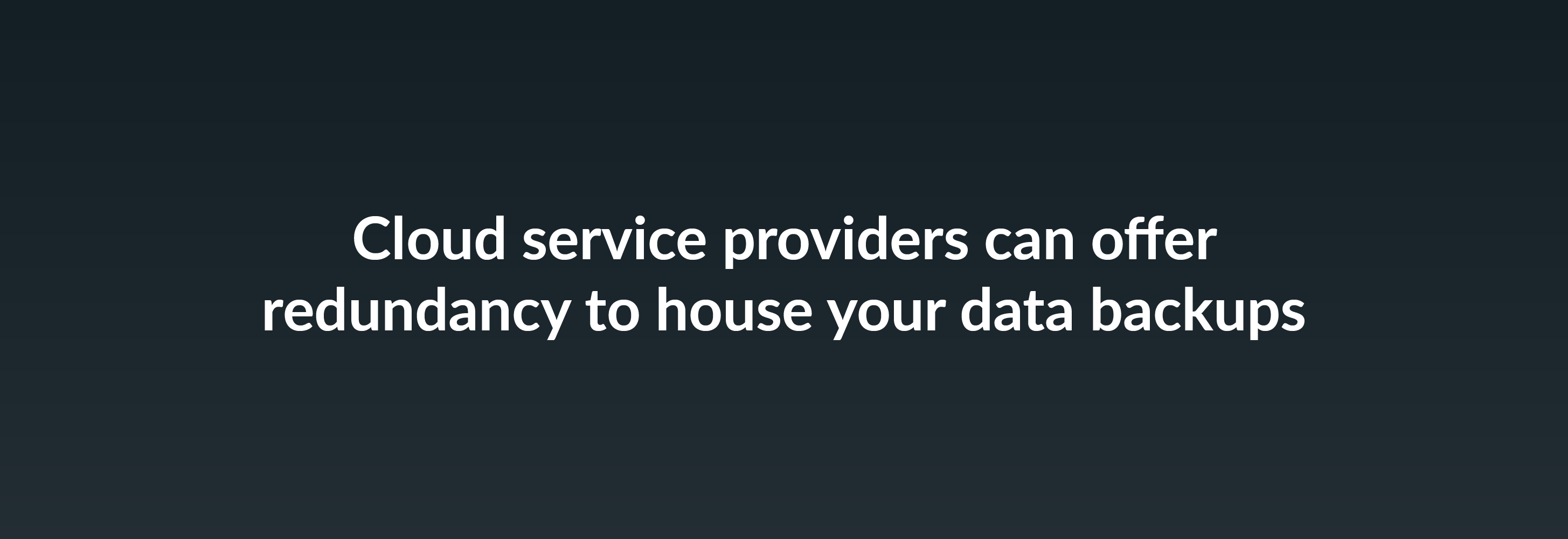
Cloud storage reduces the need for on-premises redundancy by maintaining some or all of a company's data in the cloud. Cloud service providers usually manage an organization's data in multiple data centers, creating redundancy without needing on-premises data storage.
Having your data replicated across your cloud service provider's network of servers gives your data greater resilience in case of emergency or system failure. And less downtime means money saved.
Cloud storage also empowers your organization to back up critical files with little human intervention, making it easy to get your system running again if it crashes. Cloud services typically have automatic backup and data-recovery features. Some cloud providers have user controls for removing unnecessary data and restoring accidentally deleted files. These data control tools give organizations greater control over their data management and simplify backups.
Energy savings
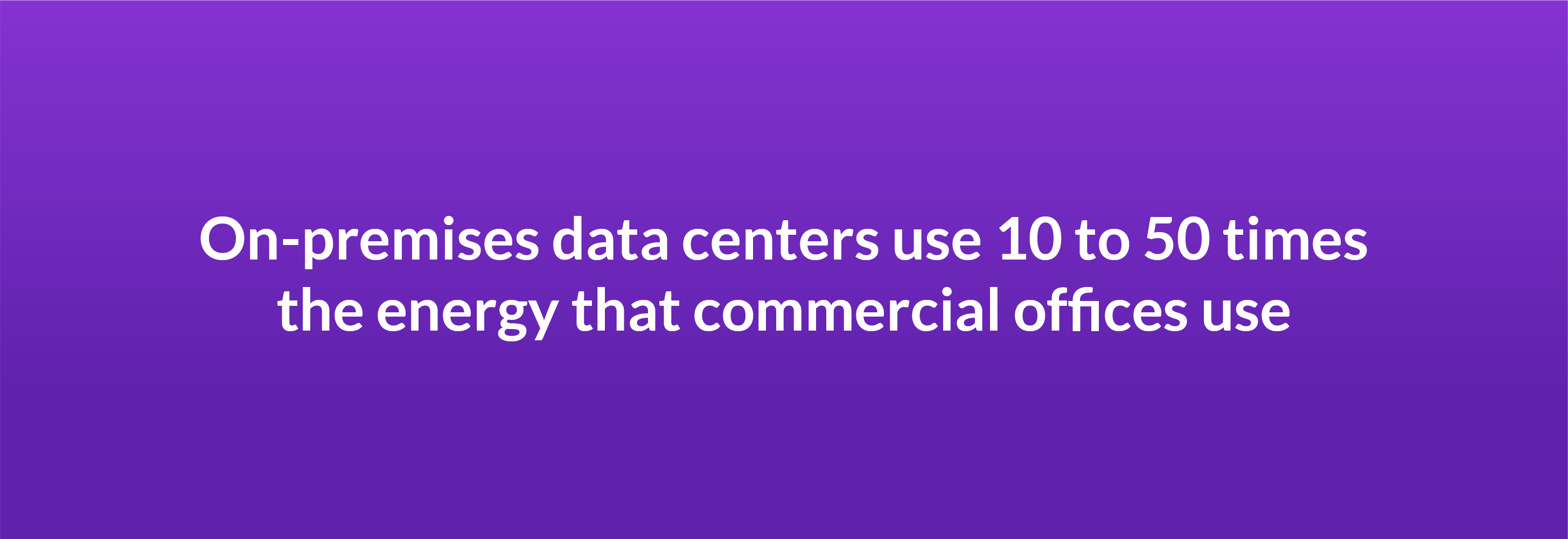
Companies that run on-premises data storage have to do more than make space for large servers — they also have to pay the energy bills those servers create. Hardware in data centers runs constantly and uses considerable energy. Large data servers take up a significant amount of space and require a steady air supply. Server rooms typically heat up quickly, but the equipment has to remain cool to function correctly. Overheating causes costly harm to the hardware, which is even more challenging to deal with than the problem of ventilating the room.
Data center administrators solve this issue by running large fans to cool the hardware and prevent overheating. These fans run around the clock to effectively air-condition the data servers, bumping up energy costs. Central heating and air conditioning work in tandem to maintain the proper climate inside a data storage room.
As a result, a data center can use anywhere from 10 to 50 times the amount of energy a traditional commercial office building uses.
Switching to cloud data storage may solve these energy spending woes. Cloud storage reduces the amount your company would spend on energy to maintain and run an on-premises data server. The cloud service provider pays to heat, cool, and operate the data servers on your behalf. Because the costs are dispersed across customers, it's usually more cost-effective than managing energy costs on your own.
Another area of cloud computing cost savings is electricity consumption. Hardware uses a significant amount of electricity, the cost of which goes on your company's electric bill, regardless of whether you actually use all of the server space. Under-utilizing your data servers becomes a waste of electricity.
Cloud services reduce or eliminate the hardware your organization uses for data storage, enabling it to get rid of the servers. Having less hardware to power reduces the amount you spend to run it. If your company entirely replaces its hardware with cloud data storage, you could see an even more drastic increase in energy savings.
Low initial investment costs
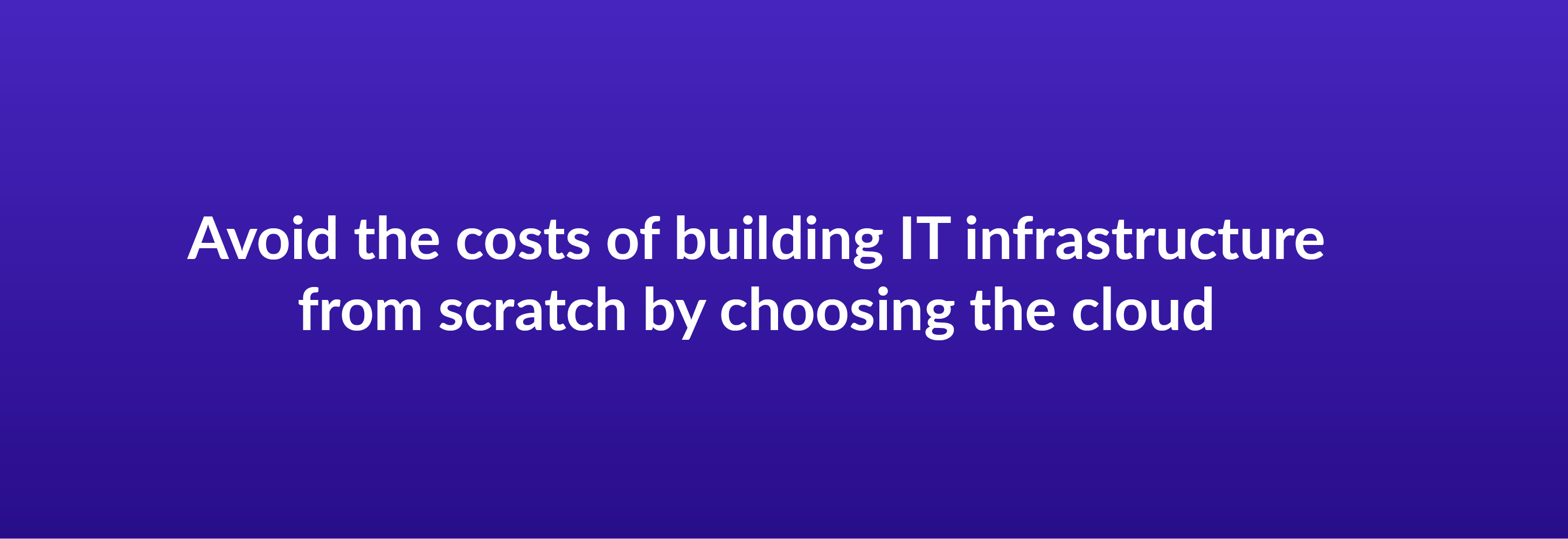
With legacy data systems, you have to build your own IT infrastructure from scratch. The initial investment in on-premises data storage typically runs high, because your business must first purchase data servers. These large, expensive machines are a considerable upfront investment, and so is their installation.
Because initial costs can run relatively high for legacy content management systems, it's particularly challenging for smaller or growing organizations to get started. Since the cloud doesn't require hardware, you don't have to make that initial investment, reducing the upfront cloud server cost.
Removed need for hardware investment
Cloud storage is significantly more cost effective because cloud providers manage storage infrastructure for their users. Rather than paying for hardware purchase, installation, and associated costs, cloud storage users usually pay a fixed price for their storage. This approach to data storage removes the need for an extensive upfront investment.
Your company can spend less on its data storage solution when you don't have to purchase data servers worth thousands of dollars, make space for these data centers, and pay for additional equipment like fans and processors.
The cloud's lower initial investment price reduces the cost barrier to entry. Cloud services enable more companies to transition their data away from on-premises servers and avoid the high implementation costs for onsite server rooms.
Simplified training
Another aspect of the initial investment cost for data storage solutions is training. Implementing on-premises data storage takes time and often includes a steep learning curve for your team members. Cloud services are typically very intuitive, cutting down on initial training expenses.
Pay-as-you-go model
Cloud services also allow your organization to pay for the exact amount of cloud storage it needs for its data. A pay-as-you-go, or PAYG, pricing model gives your greater financial flexibility and provides additional storage as you scale.
Your company could make its fixed payments on a monthly, yearly, or as-needed basis, depending on your vendor's storage and payment options. Planning your cloud services budget is more cost effective than estimating what you'd have to spend on your own data server every month.
Reduced labor costs

Managing your company's data storage infrastructure is a costly effort. Multiple data servers, processors, and accompanying hardware create an intricate network of equipment to oversee, repair, and replace. Organizations running this operation need an IT team dedicated to managing the system's needs.
An on-premises data storage solution inevitably results in high labor costs since the IT team is essential for keeping servers performing as needed. Many companies see a decrease in IT labor costs when switching to public cloud data storage solutions.
Cloud storage uses less on-premises hardware than a legacy data system because the vendor owns and manages the data centers. The vendor's servers are off-site, so its IT specialists handle infrastructure issues and system management. The cloud storage provider's responsibility to manage server infrastructure reduces the need for your in-house IT staff to maintain hardware.
With less time spent on infrastructure management, IT teams are freed up to focus on more valuable tasks. Since you as a cloud user are free from the burden of managing the server network, you save the labor and time it costs to keep those systems functional.
Cloud storage solutions also reduce labor costs because of their scalability. As companies add more servers to their on-premises systems, they need more people to run and manage those storage solutions. Spending on dedicated IT teams increases with an organization's data storage needs.
The cloud provides ease of scalability, since you can expand your data storage plan if you need more space. It's much easier for organizations to manage cloud tools than on-premises hardware at every step of the process, from management to maintenance.
Reduced maintenance costs
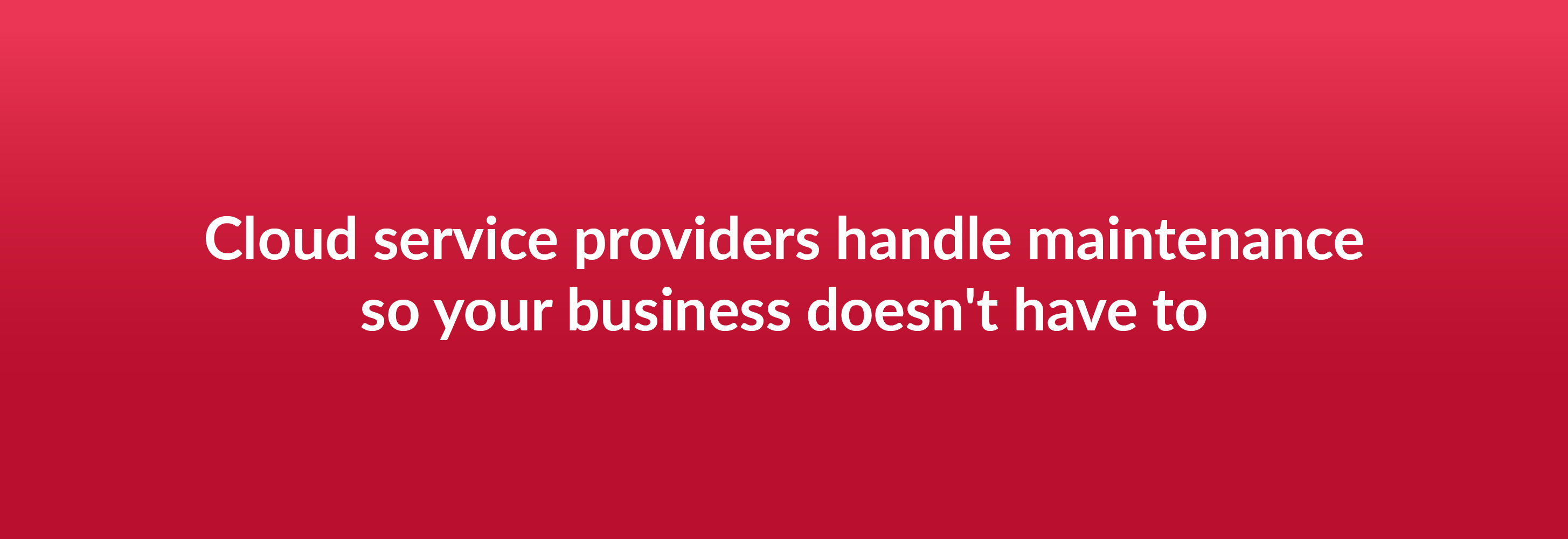
Maintenance of on-premises data centers is an around-the-clock job. Servers sometimes experience system failure or need a component replaced after wear. An emergency like a flood or fire on your company's premises could seriously damage data centers and require a significant investment in maintenance. Companies managing on-premises data servers also have to correctly maintain the supporting hardware, including fans and processors, or they could experience greater system damage.
Some companies pay for routine hardware maintenance from a third party to avoid employing a maintenance team for their servers. Even this solution results in considerable maintenance costs for the company.
Cloud services cost less to maintain than on-premises hardware because maintenance costs are passed on to vendors. Your organization's cloud services provider handles server maintenance and potential hardware failures. Having less hardware on location means less maintenance to perform.
As a bonus, your company can still have access to your data throughout that maintenance. Cloud vendors typically replicate their users' data between multiple servers, adding redundancy and flexibility in case a server fails or needs repairs. These situations won't interrupt your organization's connection to its data since you can still access the other copy through the cloud.
Cloud services also provide consistent upgrades to their services with little human intervention. Many upgrades are automatic, blending seamlessly into your company's workday to lessen interruptions. Your organization can gain regular system upgrades to the cloud data management platform and spend less time on infrastructure maintenance.
Software and tool consolidation
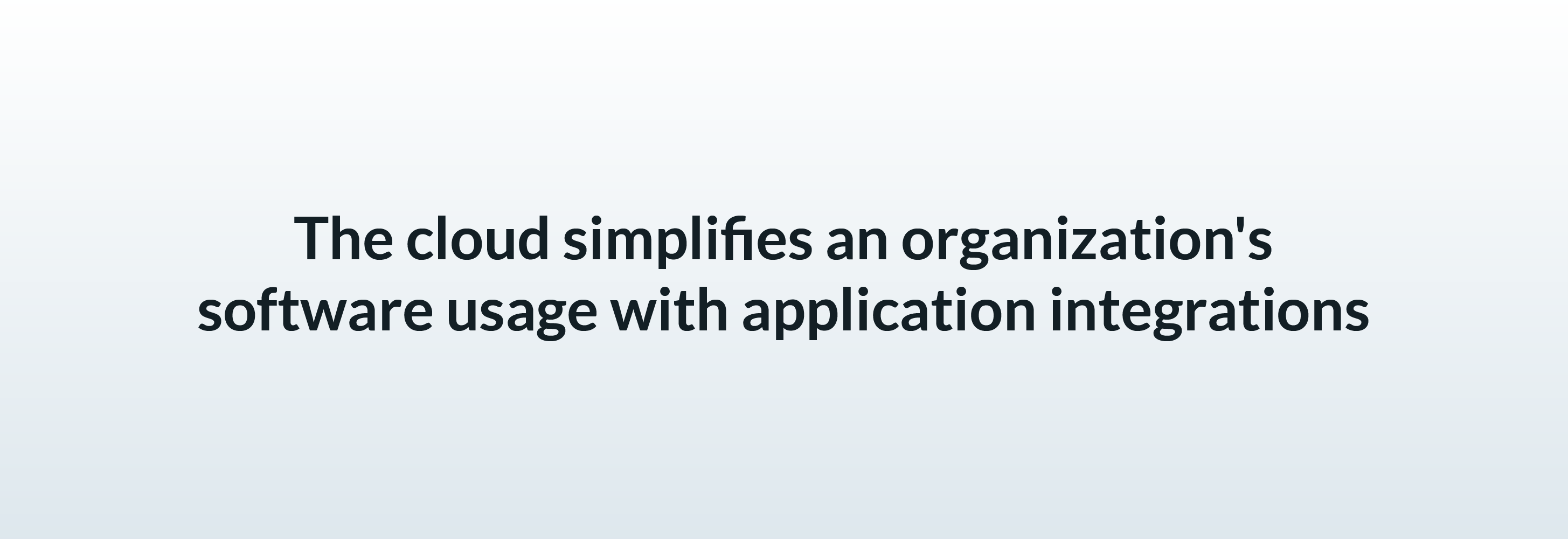
Today's business market runs on software and other digital tools. Companies use software to manage projects, communicate with team members, find information, and complete other critical processes.
Businesses with their own on-premises data centers also need software to run on their data storage hardware. Data storage equipment requires operating software so team members can monitor and control the servers. Switching to the cloud reduces the number of software applications a company runs, simplifying operations.
The need for data server software adds to the total cost of on-premise data storage. Purchasing data center software contributes to the initial investment cost of getting the hardware and supporting equipment. Businesses already use multiple software programs for daily tasks and mission-critical operations, from project management to accounting. Buying additional software to work with the data center hardware makes the total investment more costly. Companies also incur training expenses to catch team members up on the new system.
Cloud services reduce the need for hardware-specific software. Your organization will have one less program to purchase when you switch to the cloud, making it easier to manage your software purchases. Team members only have to receive training for the cloud system rather than the data center hardware and software. Your company can also gain a better picture of its data storage expenses from the regular fixed payments of cloud services.
Another financial benefit of the cloud is tool consolidation. The cloud can simplify an organization's software usage with application integrations. Cloud storage solutions support seamless integration with hundreds and even thousands of applications, empowering your organization to save time it would otherwise spend managing multiple distinct applications. When your company sticks with the programs that integrate into its current cloud systems, you centralize your tools in one intuitive platform.
Higher productivity
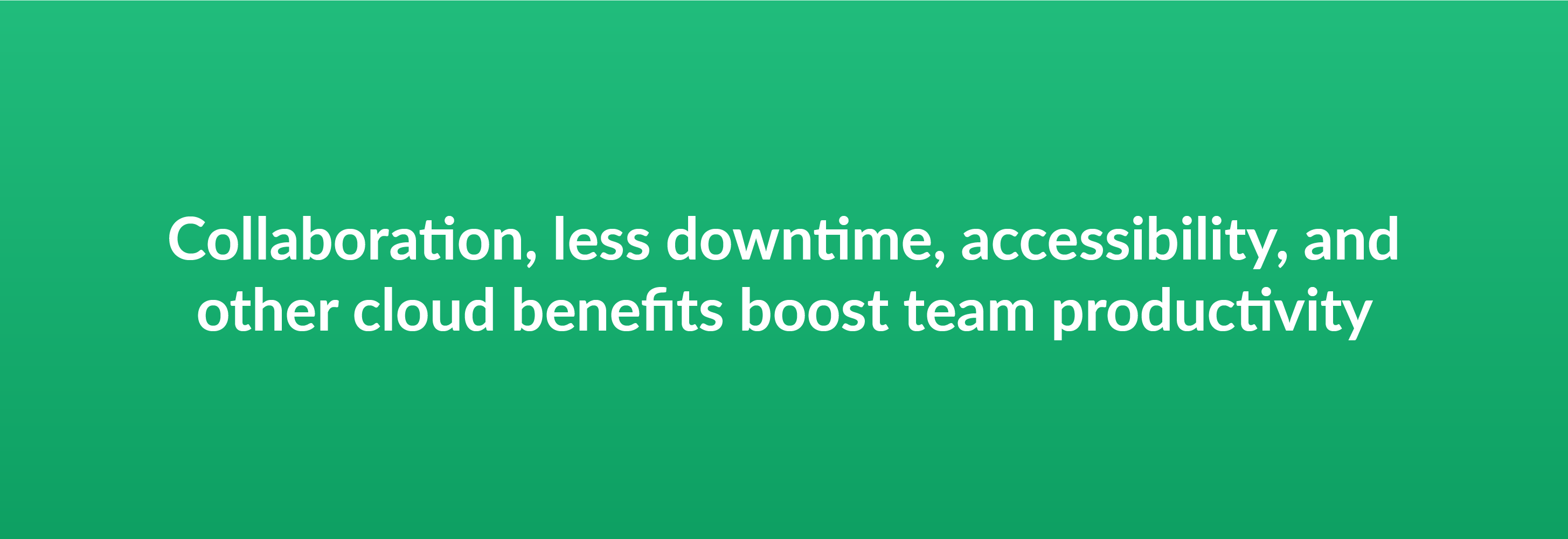
One of the most significant cloud computing cost savings is a boost to team-member productivity. Legacy data storage solutions are time consuming to implement, require platform-specific training, and have rigid workflows. Integrating on-premises data storage into your company's other processes can be challenging.
Cloud environments, on the other hand, foster productivity, putting every data management task within your team members' reach. Combining higher productivity with lower data storage management costs is a recipe for success.
In addition to all of the other cost savings, higher productivity reduces what cloud services cost by improving workplace efficiency. Increased productivity begins with deployment, with cloud services taking less time to learn and implement than legacy data storage solutions. An organization-wide hardware installation may take weeks or months, resulting in increased downtime. Cloud services only take a couple of hours to deploy. The cloud allows your teams to get back to work sooner. Cloud storage solutions also take less time to learn since they are web-based and typically intuitive.
Cloud services are available from anywhere with an internet connection. This feature allows your team members to work from the office, home, or any other location. The cloud's flexibility helps your team accomplish more through effective collaboration, regardless of location.
Application integrations also make it easy to access all your organization's data and complete work like document signing, contract approval, and automation of routine tasks without leaving the cloud user interface.
Discover the power of the Content Cloud
With a single secure platform for all your content, Box enables you to manage the entire content lifecycle: file creation, co-editing, sharing, e-signature, classification, retention, and so much more. We make it easy for you to collaborate on content with anyone, both inside and outside your organization. Frictionless, enterprise-grade security and compliance are built into our DNA, so you get total peace of mind that your content is protected. And with 1,500+ seamless integrations — as well as a range of native capabilities, like Box Sign — the Content Cloud provides a single content layer that ensures your teams can work the way they want.
The Content Cloud is a game changer for the entire organization, streamlining workflows and boosting productivity across every team. Contact us today, and explore what you can do with Box.
**While we maintain our steadfast commitment to offering products and services with best-in-class privacy, security, and compliance, the information provided in this blog post is not intended to constitute legal advice. We strongly encourage prospective and current customers to perform their own due diligence when assessing compliance with applicable laws.